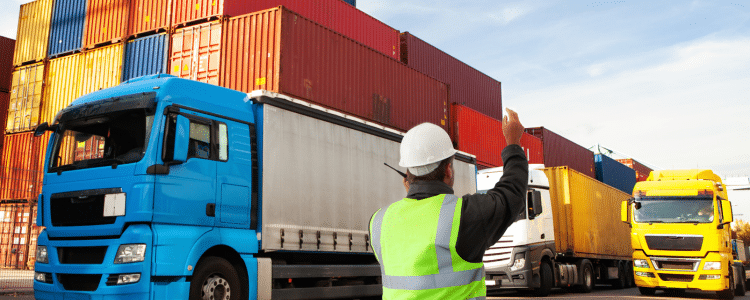For many organizations, a transportation management system (TMS) is the backbone of their entire supply chain. It streamlines everything from carrier management to shipment tracking.
If your company is considering a new TMS system, you’ve probably found that there are many options on the market. In fact, there may be too many. Where do you even start?
Today, we’re sharing a few of the factors to consider as you begin your TMS or ERP selection journey.
Transportation Management System Evaluation Criteria
1. Business Needs
Before you begin meeting with TMS vendors, it’s best to start by evaluating your company’s TMS needs and goals. Ask your team the following questions:
- How do we currently run our logistics operations?
- What transportation-related pain points are we currently experiencing?
- How could a TMS improve our supply chain operations?
- What ROI do we expect from our TMS investment?
- What core functions do we need the TMS to perform?
You want to ensure that the solution you select is agile enough to scale and grow with your company. It should not only meet your needs today but also tomorrow and into the future.
For some companies, this means implementing a cloud-based TMS system, though this model won’t work for every business.
Regardless of the deployment model you choose, your TMS solution should include functionality such as:
- Carrier Management: This includes automation for tracking carrier performance, managing contracts, and resolving disputes.
- Freight Rate Optimization: This helps you compare rates from different carriers and find the best price.
- Shipment Tracking: This provides real-time visibility into your shipments so you can track the location of your products, as well as any delays or disruptions.
- Warehouse Management: This includes features that automate operations such as receiving, storing, and picking and packing orders.
- Compliance: This helps you ensure that you are in compliance with all applicable regulations, such as those related to customs, hazardous materials, and trade sanctions.
To decide which system is right for you, we recommend assembling a project team comprised of employees from various departments. You can also partner with a software expert to walk you through the software selection process.
The 2024 ERP Report
88.5% of respondents said they deployed or plan to deploy AI at their organization. Learn about AI adoption and other ERP trends by downloading our latest report.
2. System Integration
If you’re currently operating a complex supply chain, you might have many different software solutions talking to each other. This might include:
- ERP systems
- Supply chain management systems
- Customer relationship management systems
- Warehouse management systems
If you want to automate your processes and improve customer service, your TMS must be able to interface with your other platforms. This way, you can access a complete view of your operations, making it easier to manage distribution and shipping.
3. Business Intelligence
Your supply chain moves at a breakneck pace, so you need access to all your key data points in real time.
Advanced business intelligence functionality can help you make more informed logistics decisions. For instance, it can help you quickly identify potential issues and make necessary changes.
In addition to advanced business intelligence, your TMS should feature user-friendly dashboards that you can share with your C-suite, employees, partners, and stakeholders.
With the right reporting functionality, you can track progress on key performance indicators (KPIs) and proactively make adjustments.
4. Scalability
If all goes according to plan, your business will grow and expand as it matures. You need a TMS that’s flexible enough to keep up.
In particular, your TMS should be able to handle periods of high demand. Ask vendors about scalability before even scheduling a software demo.
5. Customer Service Features
You should look for a TMS that streamlines the customer experience.
Make sure it has a secure customer portal that allows customers to view real-time fleet status and make changes to their shipments.
If you’re planning a complete digital transformation, you may want to look for more advanced features. Some systems can automatically make personalized recommendations about shipping options, carriers, and other logistics matters.
How are You Handling Your Inbound and Outbound Orders?
Many companies are still relying on legacy software or a convoluted network of spreadsheets, phone calls, and emails. They know that a transportation management system can help them manage all their transportation and logistics functions, but they’re not sure which solution is the best fit.
If this describes your company, we can help. Contact our enterprise software consultants below to learn more.














